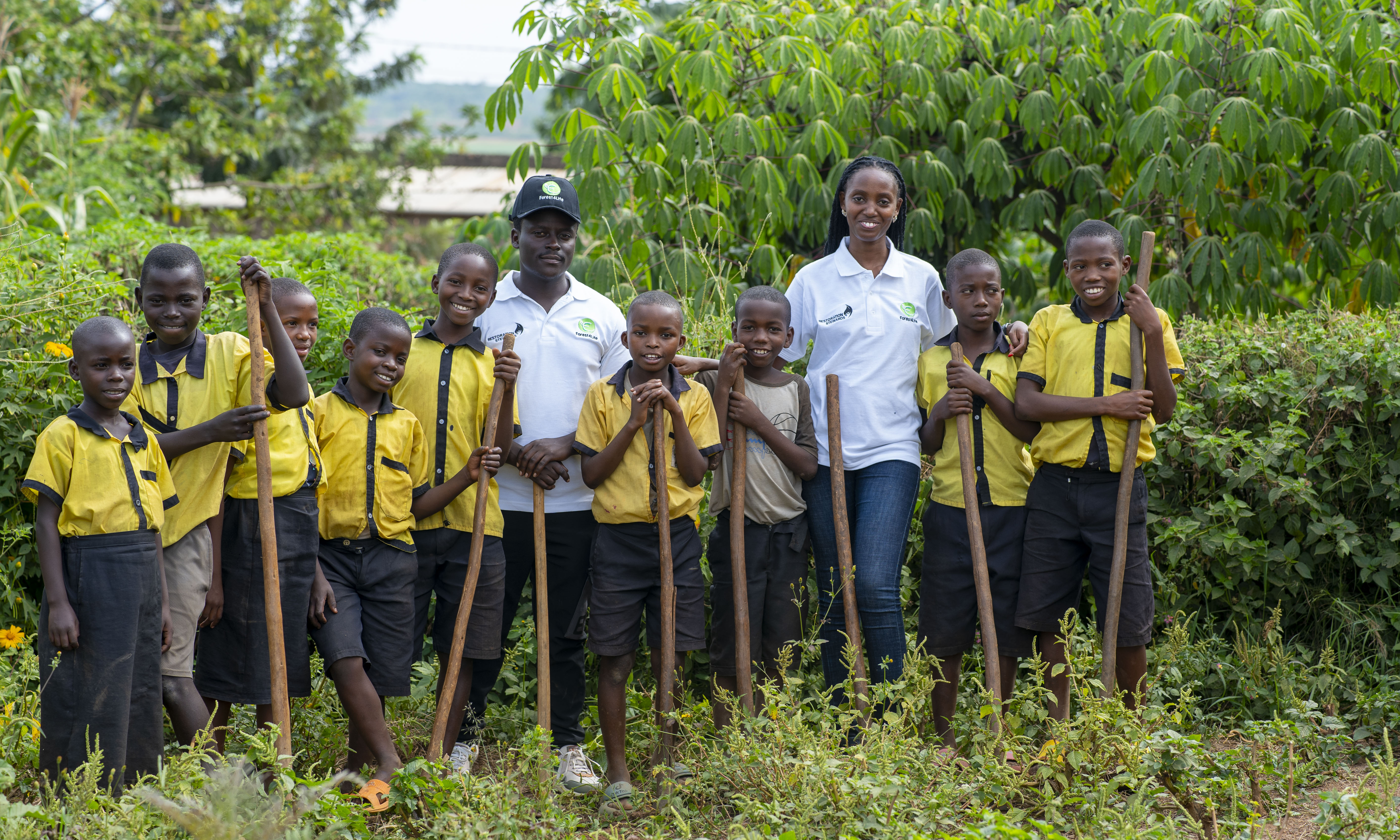
TEACHING ENVIRONMENTALISM TO YOUNG MINDS: THE IMPORTANCE OF PLANTING TREES
by:Kamanzi Claudine, 2024-09-22 01:13:00
Kayovu Village, located in Rwanda, has been severely impacted by deforestation and land degradation over the past few decades. Extensive logging, agricultural expansion, search for firewood and unsustainable land-use practices have led to the loss of forest cover, resulting in soil erosion, reduced water quality, and decreased agricultural productivity. These environmental changes have not only harmed local ecosystems but have also increased poverty and food insecurity, making it difficult for the community to sustain their livelihoods. The Forests4Life project, initiated to combat these challenges, aims to restore degraded lands by cultivating native indigenous trees such as Markhamia lutea and Acacia abyssinica, alongside fruit trees. Through reforestation and agroforestry, the project seeks to revitalize the landscape, improve soil fertility, and enhance biodiversity. The Forests4Life project initiative does not only involve tree planting; it is deeply rooted in community empowerment and sustainable land management. The project involves capacity building, engaging locals in restoration activities, and fostering a sense of ownership over the revitalized land. By actively involving the community, the project aims to create a sustainable and lasting impact, ensuring that the restored landscapes are maintained and cherished for years to come. One of our key strategies involves engaging local schools in the reforestation process. So far, we have collaborated with 1 school, involving over 80 students in tree planting and environmental education activities, during this initiative, 200 indigenous tree seedlings were planted in school gardens. This not only helps restore the land but also raises awareness among the younger generation about the importance of environmental stewardship. Our plans include expanding this initiative to 3 more schools within the next two years. By this Forests4Life is nurturing the next generation of environmental caretakers to continue to plant more trees, engage more communities, and enhance the biodiversity of the region. Recently, the Forests4Life team, led by Claudine Kamanzi, the 2024 Dryland Restoration Steward, had the privilege of working with about 80 young students at Kayovu Primary School located in the Bugesera district, in eastern Rwanda. During this activity, students and team members actively participated in tree planting and capacity-building activities. The experience was not only educational but also deeply engaging for everyone involved. By empowering students with knowledge and hands-on experience, Forests4Life is ensuring that the values of environmental stewardship are deeply rooted in the community's future.

A Hands-On Learning Experience
This learning activity took place in Kayovu Primary School, where students eagerly gathered to learn about the significance of trees and how to plant them. Guided by the knowledgeable Forest 4Life team, students were taught about the importance of native indigenous trees and the step-by-step process of planting a tree, from selecting the right sapling to ensuring it is properly nurtured. This hands-on approach to learning allowed the participating students to engage directly with nature, fostering a deeper connection to the environment. They learned about the various benefits trees provide, such as the provision of food, improvement of soil and air quality, provision of shade, and the support of wildlife.


One of the most heartwarming moments was seeing the joy and excitement on the children's faces as they planted their saplings. Each student was given a young tree to plant and care for, making the experience personal and meaningful. The activity wasn't just about planting trees; it was about cultivating a sense of ownership and responsibility towards nature. The children were enthusiastic and took pride in their contributions, knowing that they were playing a part in making their environment greener and healthier. One student, Noella, stood out with his dedication. He carefully selected his sapling, made sure it was planted securely, and even gave it a name. This level of personal commitment is exactly what we need to foster in young people to ensure a sustainable future. As we move forward, the Forest4 Life team remains committed to working with these young people to ensure the trees we planted around the school thrive. Each student is responsible for monitoring their own tree, fostering a sense of ownership and responsibility. To motivate the students, we have established a reward system: at the end of three months, we will award prizes to students whose trees are the healthiest and strongest. Through this initiative, we hope to further spark the interest of young people in environmental restoration and encourage their continued engagement in preserving our natural surroundings.



The anticipated impact of the Forest4Life project is multifaceted. Environmentally, the reforestation efforts will restore 200 hectares of degraded land, increase carbon sequestration, and enhance biodiversity. We expect to plant over 100,000 trees, which will help bring back native species, improve air quality, and stabilize local ecosystems. Economically, the integration of agroforestry will boost crop yields by up to 30%, providing a stable source of food and income for over 200 households. Socially, the project will empower the local community by involving them in decision-making processes and capacity-building activities. Furthermore, the establishment of the community adaptation fund will create a sustainable financial model that can be replicated in other villages, fostering long-term resilience to climate change. This holistic approach ensures that environmental restoration goes hand-in-hand with socio-economic development. As the Forest4 Life Team, we extend our heartfelt thanks to our esteemed mentors, Leitoro Adrian and Dr. Betemariam Ermias, for their invaluable advice. They guided us to involve the younger generation in our restoration journey, a suggestion that served as an inspiration for the conduction of this learning activity with school children, and it has truly paid off. We are witnessing remarkable progress among the youth in our community, who are increasingly enthusiastic about participating in environmental restoration efforts.